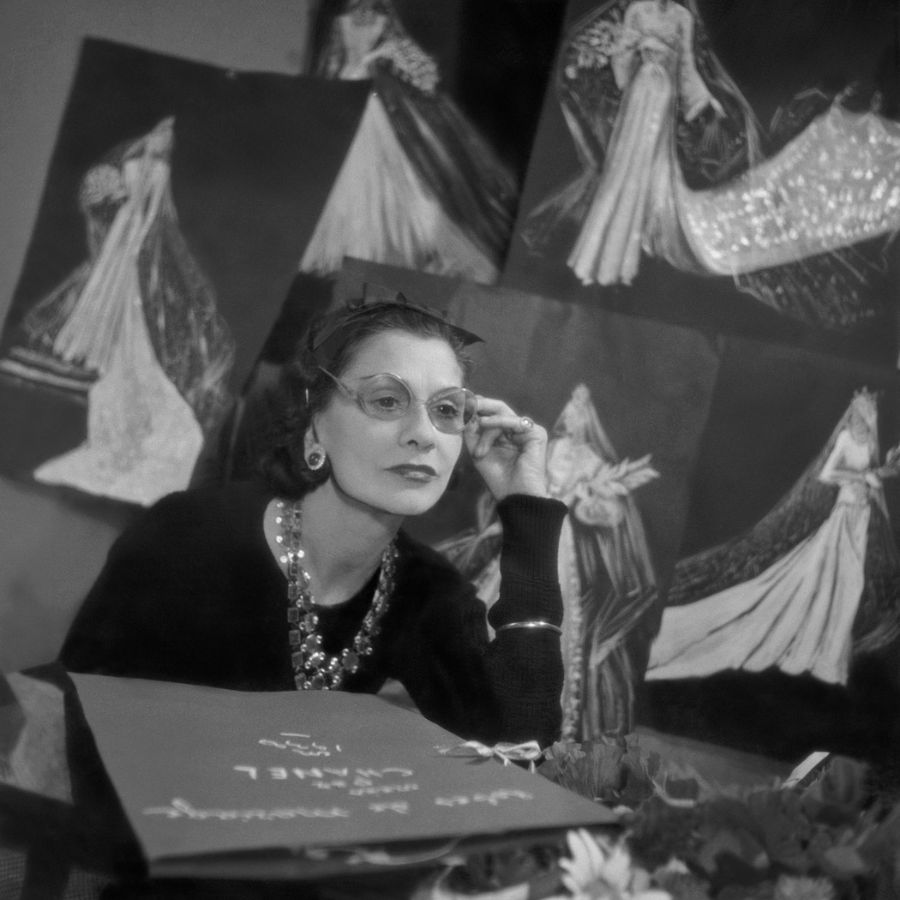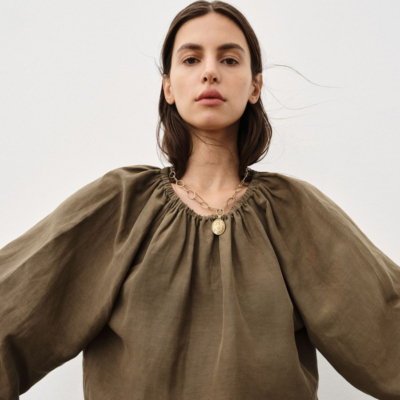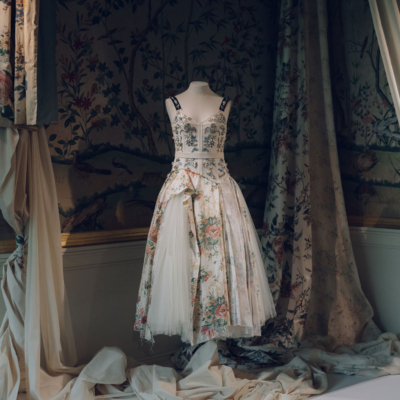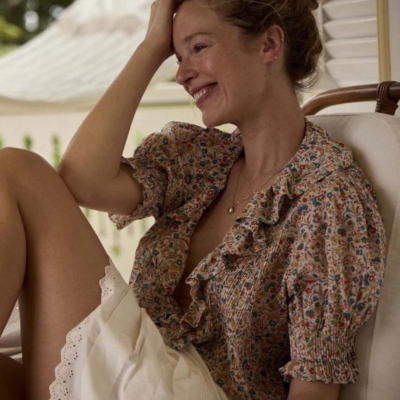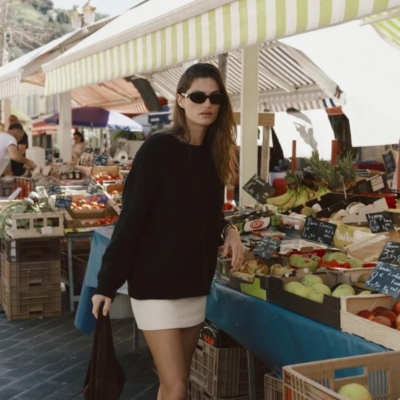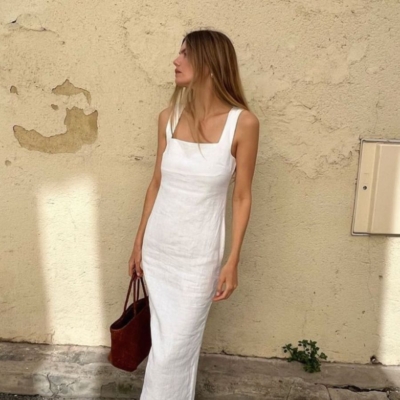On an private tour of Gabrielle Chanel. Fashion Manifesto at The V&A, the first UK exhibition dedicated to the work of the French fashion designer, contributing fashion editor Sarah Macken went beyond the curtain of the glamorous life of a fashion icon. Here’s what she learned …
All products featured on thegloss.ie are selected by our editors. If you buy something through affiliate links on our site we may earn a commission.
Chanel did colour and florals too

Most of us associate Gabrielle Chanel’s clothing with two things: tweed skirt suits and her use of black and white. And, while the skirt suit was undeniably one of her most prolific designs, there are many playful elements to her work to be explored too. For instance, in the room of two piece suits, pictured above, which were according to the V&A notes, “the defining garment of Gabrielle Chanel’s post-war contribution”, the choice of unexpected colour – particularly in later collections – is not something that’s always discussed. Trimmings in contrast colours and novel materials added to the distinctive look, which was constructed for ease, with the natural motion of a woman’s body in mind, leading it to be described by Vogue in 1964 as “the world’s prettiest uniform”. Equally, a printed cotton dress from the1930s, pictured below, showcases how Chanel strayed from a subtle base palette of beige, white and black, steering into vivid tones such as royal blue and deep red. And, while she kept distracting decorations to a minimum, the occasional floral print was the exception to the rule.

Image: Chanel.
Chanel was an early adopter of loungewear
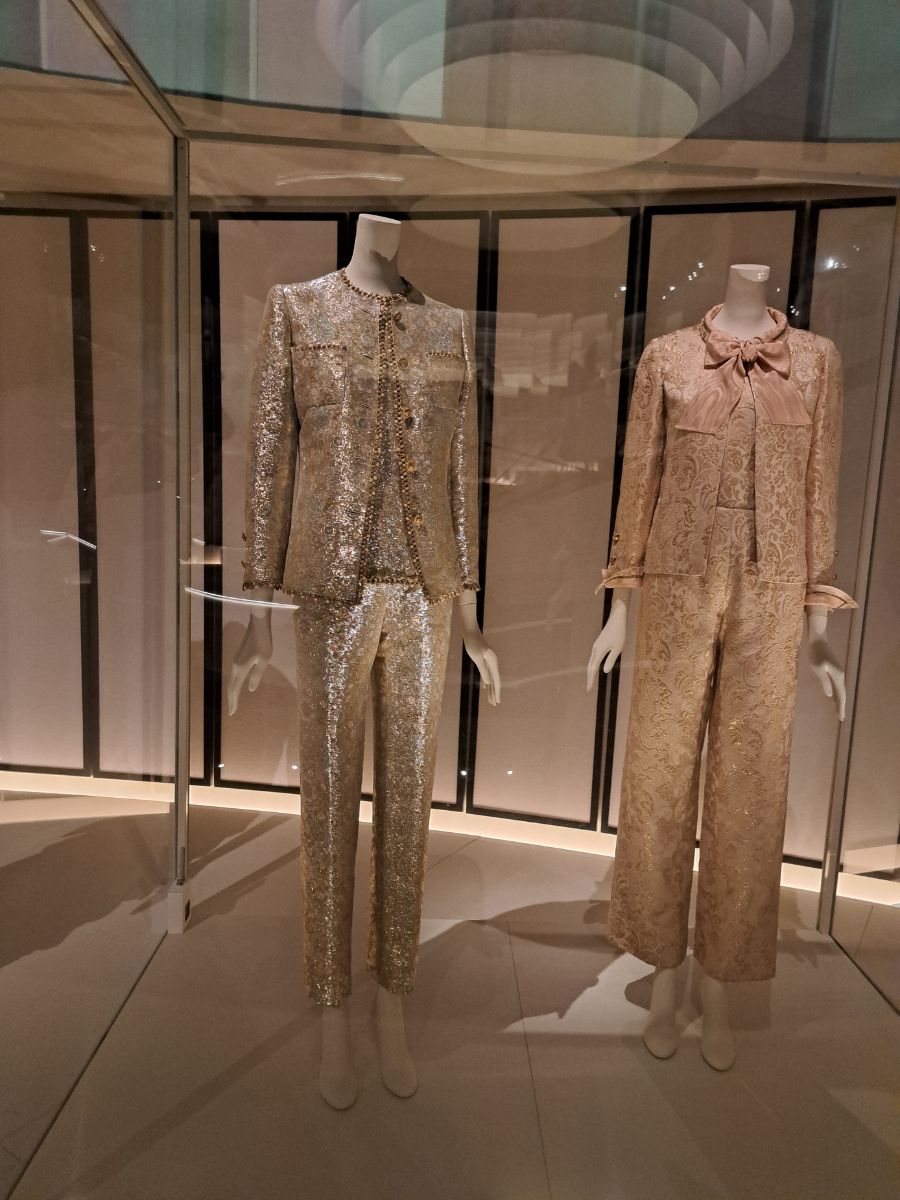
… although not exactly as we know it. Think: less cashmere joggers and more decadent house clothes. It makes sense seeing as comfort has always been a priority in Chanel’s designs, from her love of practical fabrics like tweed which penetrated her collections (something that previously was foreign to haute couture) and the fact that she borrowed from the codes of men’s clothing with an emphasis on function rather than formality (she frequently wore trousers for leisure activities, too). In fact, from the 1910s on, Chanel often wore semi-formal ‘dinner pyjmas’ while entertaining at home. These were usually made from fabrics like chiffon or silk. However, in the 1950s the designer rebooted the look, this time in glistening brocades and lamés, pictured above, but still with Chanel’s trademark relaxed fit (a sequinned lounge suit worn by Diana Vreeland is uncannily like something that would be rolled out as party wear now). While we wouldn’t bat an eye at decadent house clothes now, back then it was, as the fashion cliche goes, groundbreaking.
Chanel didn’t invent the LBD
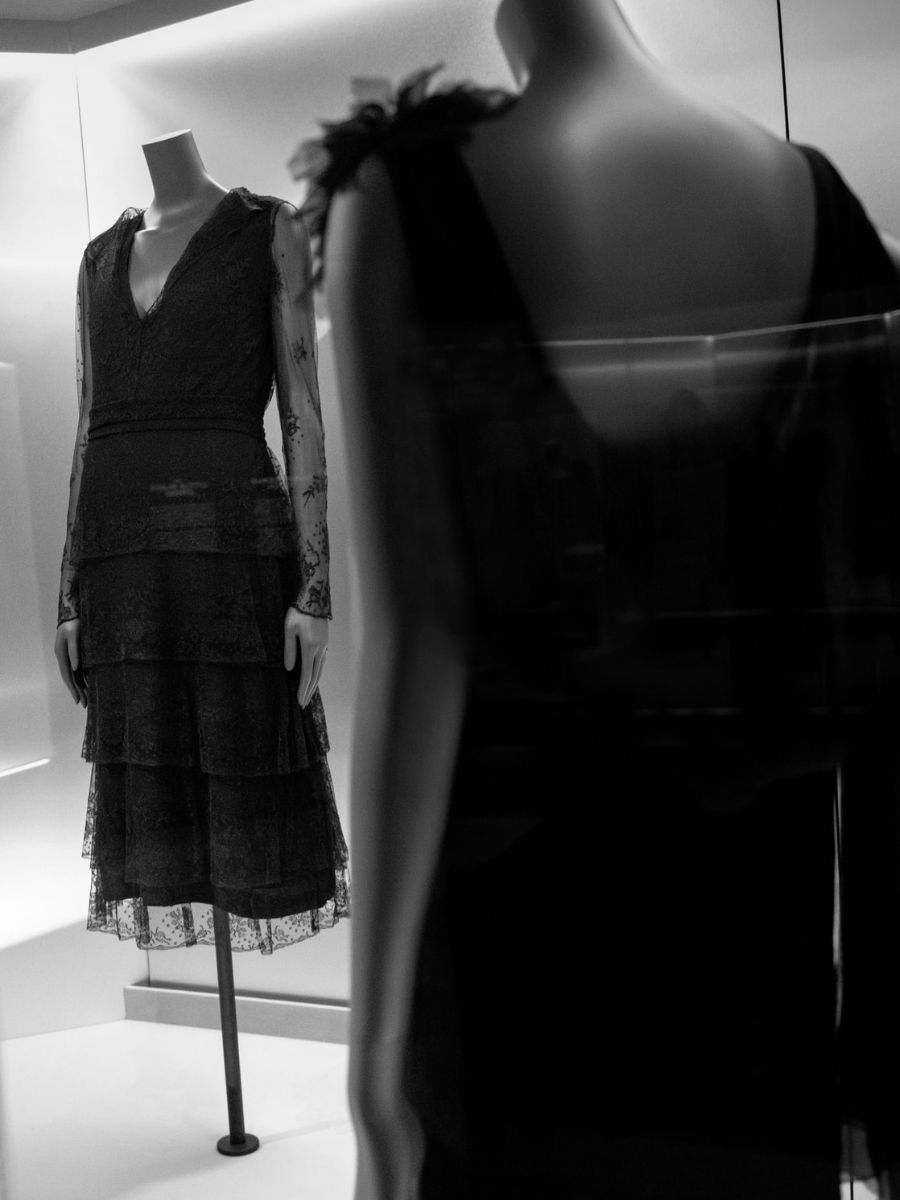
Image: Chanel.
Contrary to popular belief, Chanel didn’t invent the little black dress (LBD) but she certainly propelled it to fame in the fashion sphere. A rejection of ornamentation led to what the V&A dubs “an austere luxury” in her early work; stripping away the artifice so that the attention is entirely on the cut of the fabric, the fit of the dress and how it moves on the body. A precursor to the minimalist or quiet luxury trends of today, the emphasis had to be on quality. As Chanel famously said, “Scheherazade is easy; a little black dress is difficult.” Details like Chantilly lace and black chiffon flowers, which were often scattered around the neckline, imbued the looks with a pared-back glamour that still feels modern today.


Images: Chanel.
We may be Francophiles but Chanel was an Anglophile
While Chanel aficionados may obsess over French fashion, Chanel was inspired by British culture. Her initial bond with England was formed due to her relationship with British shipping merchant Arthur ‘Boy’ Capel, but it continued long after his tragic death in a car crash. Her friendship with Vera Bate Lombardi saw Chanel mingle with the upper echelons of British high society including the Duke of Westminster (it’s believed the two had a decade-long affair), Winston Churchill and the Duke of Windsor. Her relationship with the Duke of Westminster infiltrated her aesthetic too – she embraced British sporting pursuits and the uniform that went with them, featuring tweed and knitted jersey in her collections. She had her riding clothes made by James Pile, a British tailor who worked out of Paris and Biarritz, as well as Huntsman of Savile Row.
By all accounts, however, Chanel was an unreliable narrator of her own life – historians note how she often embellished parts of her past, offering up contradictory information. She was known for being outspoken – at times ferocious. During World War II, Chanel was linked to Hans Günther von Dincklage, a German embassy official who was also a spy – Chanel asked him and his contacts to assist with freeing her nephew André Palasse who had been interned as a prisoner of war in Germany. In July 1941, Nazi authorities name-checked Chanel as a trusted source (it’s unclear if she was aware of this). Her code name was Westminster, her number F7124. In a contradictory move, she joined the French Resistance in 1943. She also maintained her relationship with Churchill. Speaking of Chanel, who would often go hunting with him, Churchill once said, “That woman could run a country”.

Chanel was a pioneer of the ‘non-fragrance’ fragrance

Long before the beauty industry tapped into the idea of beauty as a means of autonomy and fragrances like Glossier’s You were designed to enhance your natural scent, Chanel created the archetype of the ‘non-fragrance’ fragrance. She was one of the first, if not the first, to go to market selling the idea that scent shouldn’t be prescriptive. Rather than a perfume being something didactic or ubiquitous, Chanel created the idea that a fragrance was akin to “an invisible accessory” – its purpose is to complement what’s already there. Launched in 1921, Chanel’s debut perfume No5 became the world’s best-selling fragrance. Its discreet square bottle, which was the first time the now famous interlocking Cs were used, and minimalist packaging with simple typography were novel at the time and have translated seamlessly into the digital age, adorning many a shelfie on Instagram today.

Early photos of what we’d now call street style taken by Paris photography studio Séeberger Frères between 1919 and 1934 featuring fashionable women in Paris, at the races at Longchamp or at beach destinations like Deauville or Biarritz, all wearing Gabrielle Chanel’s designs.
Plus: take in the exhibition in style …

Experience the wold of Chanel in style thanks to the The Gabrielle Chanel Fashion Manifesto experience at The Kensington. The package includes two tickets for the now sold out exhibition at The V&A, a full English breakfast and a copy of the Gabrielle Chanel Fashion Manifesto coffee table book for suite bookings. Rates from £450 per night; visit Doylecollection.com for more. While you’re there book in for the High Fashion High Tea, available every day from 12 noon to 4.30pm – a specifically curated afternoon tea which takes its aesthetic leaning from both the house of Chanel and the designer herself. From £58 per person.

Main image: Gabrielle Chanel. Fashion Manifesto at the Victoria and Albert Museum, London, 16 September 2023 – 25 February 2024. Presented in partnership with Palais Galliera, Fashion Museum of the City of Paris, Paris Muse?es. With the support of Chanel.




